|


256-bit encryption
$500,000 protection

|
USS MONITOR
You are looking at the
most accurate USS Monitor model ever produced in the
history of model making. It has coal loading ports, skylights,
anchor access, among many other features. The armor
plate design of the real ironclad and the number of
them are strictly implemented. The first model was built from
information provided by Dwight Sturtevant
Hughes who is the author of the Unlike Anything
That Ever Floated: The Monitor and Virginia and the
Battle of Hampton Roads, March 8-9, 1862. A
subsequent model was commissioned by the president
of
National Museum of the American Sailor.
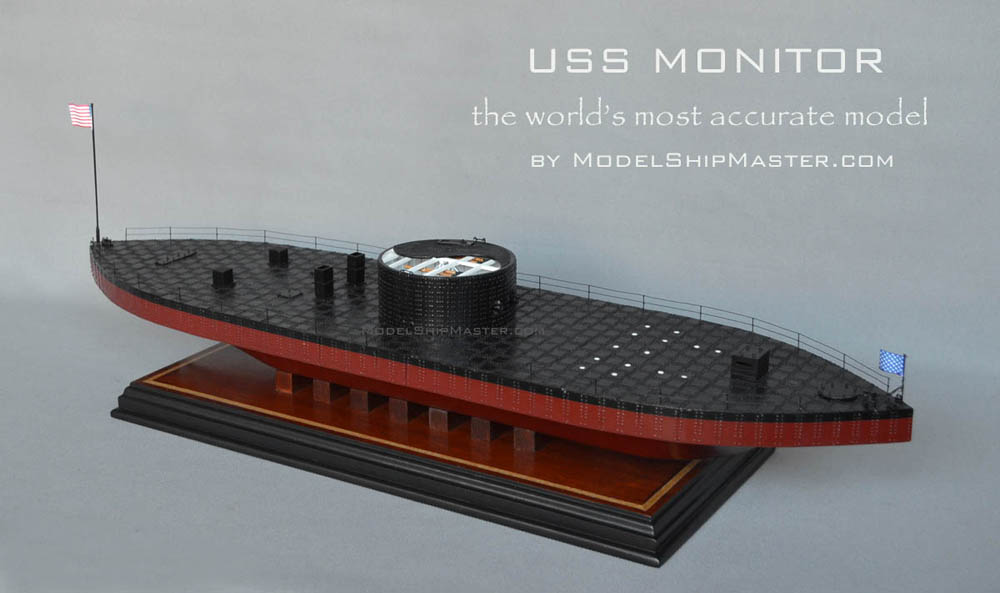
The USS Monitor was a
marvel of the mid-nineteenth century. There are many first's
associated with the USS Monitor. She was the first
completely sheathed with iron plating on the sides, the
first ironclad warship commissioned by the United States
Navy, the first ship employing a revolving turret. She
was also the first ship
which had below waterline flushing toilets.
Monitor was designed by Swedish-born inventor John
Ericsson. Ericsson had moved to England in 1826 and
promptly invented the screw propeller; then he crossed
to the United States and designed the first screw-driven
warship. After the start of the War, Ericsson designed
the Monitor from scratch, a ship utterly different from
any warship ever built: a low freeboard (only the ship's
turret, stacks, and small armored pilot house projected
above the hull) whose side was covered by whopping 7"
thick armor plates. The turret was not part of
Ericsson’s original design, but rather the brainchild of
U.S. inventor Theodore Timby.
Highly impressed by Ericsson's innovative design,
Cornelius S. Bushnell--one of Connecticut's most
distinguished men--traveled to Washington and convinced
the Navy to authorize its construction. The contract for
the ship was given to Ericsson and work began in New
York.
With
construction workers working at a frenetic pace, the
ironclad was launched just
within 100 days of being laid down. On February 25, USS Monitor
was commissioned with Lieutenant
John L. Worden in command.
Not much more than a month
after it hit the water, the USS Monitor was headed for its
first naval engagement at Hampton Roads in southeast
Virginia. The Confederate Navy had its own ironclad, the
Virginia, which was
different from the Monitor in that it was a conventional
wooden warship that was given a new iron epidermis. On
Mar. 7, 1862, the Virginia had destroyed several Union
ships at Hampton Roads. When the Monitor pulled into the
harbor the next night, the Virginia found a much
worthier opponent. In the Battle of Hampton Roads, the
two ships pummeled each other with cannon balls and
shells to no real effect, and since neither ship’s
cannons could penetrate the other's armor, the battle,
which lasted about four hours, was a stalemate. The
future of naval warfare changed dramatically on that
day. The day of the wooden gunship was over.
After the ironclad’s
showdown with CSS Virginia, she was considered the
‘little ship that saved the nation’, as without her, the
whole Union Navy would have been destroyed by the
Virginia. The Monitor continued to serve in Virginia
waters. Monitor was positioned off of Newport News
Point, guarding against any excursion by the Confederate
ironclad CSS Richmond.
USS Monitor was lost on
December 31 1862, when the vessel was swamped by high
waves in a violent storm while under tow by the tug USS
Rhode Island off Cape Hatteras, North Carolina for a new
battle. Sixteen of her 62-member crew were either lost
overboard or went down with the ironclad, while many
others were saved by lifeboats sent from Rhode Island.
In August 1973, the wreckage was located on the floor of
the Atlantic Ocean. In 2001, recovery efforts began to
salvage the ship's steam engine. The next year,
Monitor's innovative turret was raised. The upside-down
turret was raised from beneath her deep, capsized wreck
years later with the remains of two of her crew still
aboard. The two were later buried with full military
honors on March 8, 2013, at Arlington National Cemetery
in Washington, D.C. All artifacts are now at the
Mariner's Museum in Newport News, VA.
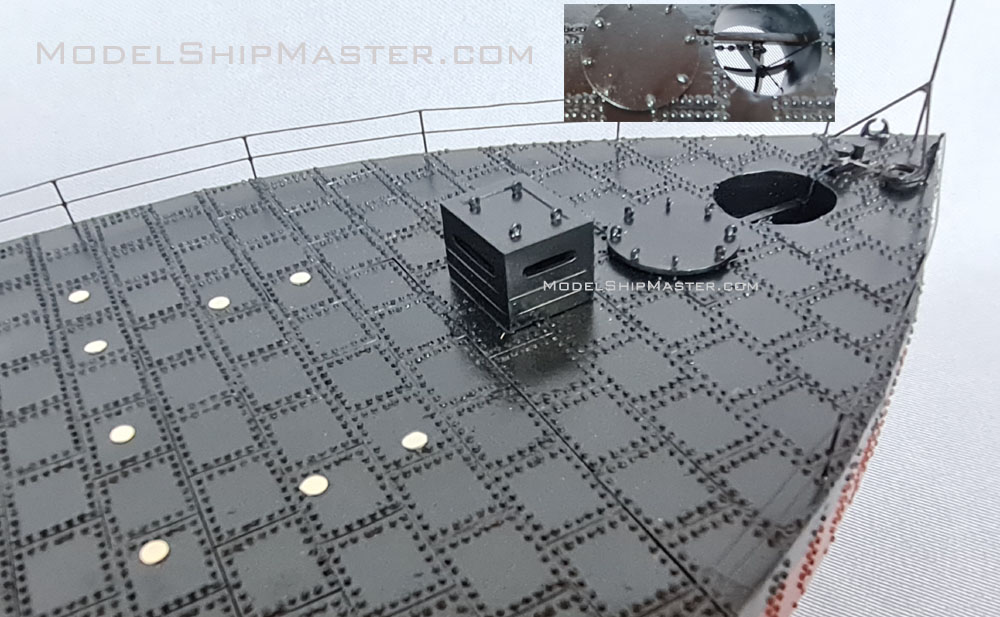
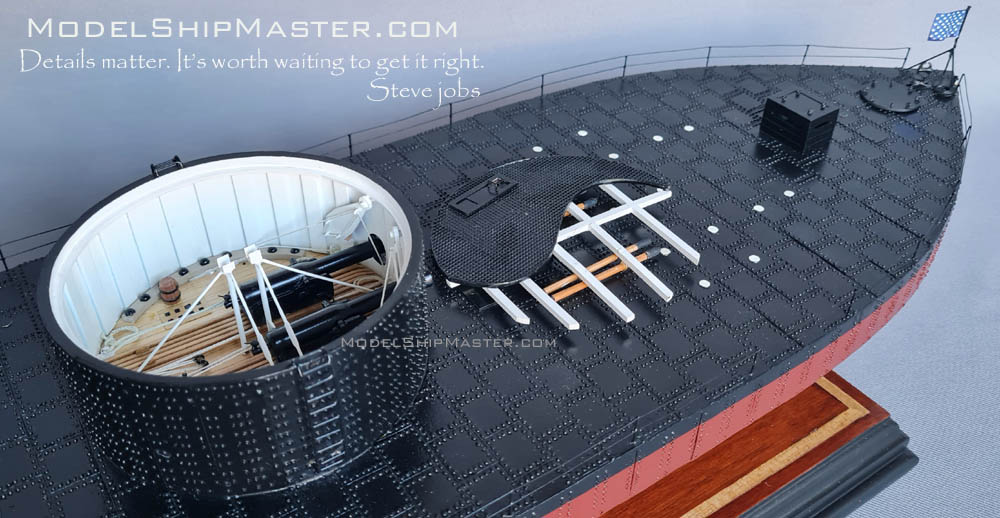
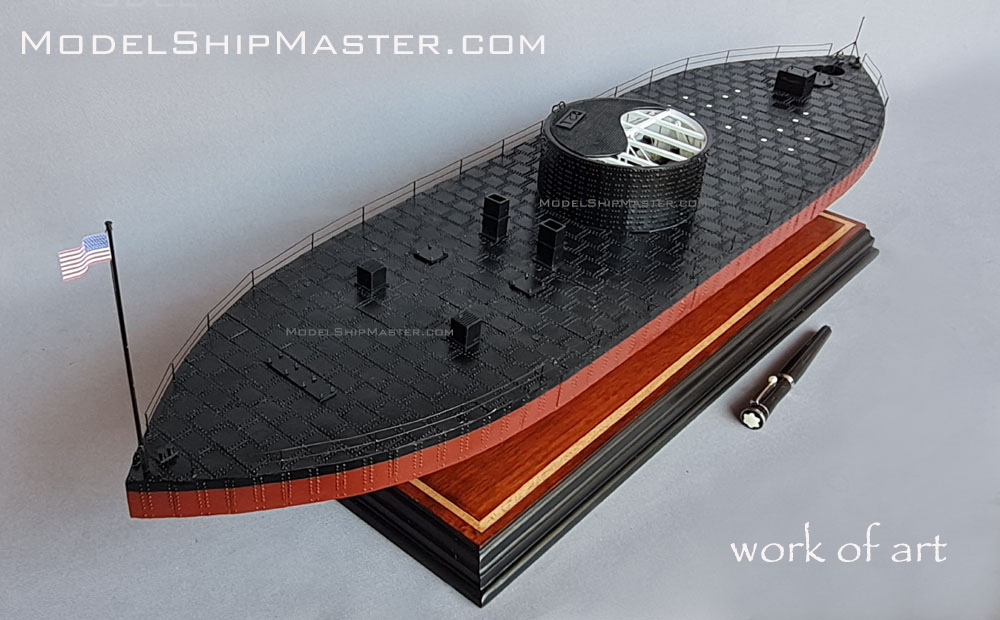
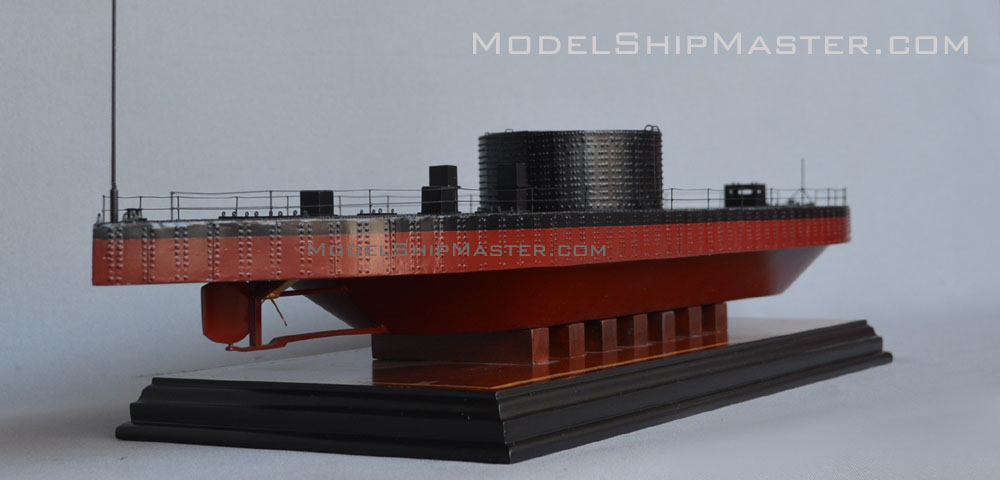
This
primarily wood USS Monitor model is 30" long x 9" wide x 9.5" tall
$2,950
 Shipping and insurance
in the contiguous US included. Other places: $300
flat rate.
This model is in stock and can be shipped within 5
business days.
Shipping and insurance
in the contiguous US included. Other places: $300
flat rate.
This model is in stock and can be shipped within 5
business days.

Other ship, different size? Just let us know by clicking
on this link: Commissioning. The
process will be easy and stress free.

Be sure to check out our beautiful
USS Cairo,
CSS Tennessee,
CSS Virginia
model, and USS Tecumseh.
|